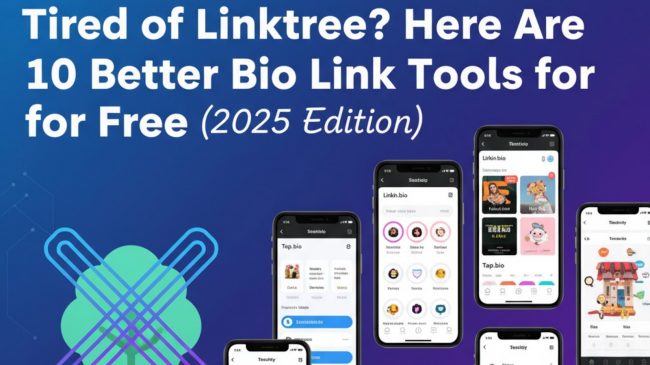If you’re trying to break into a new market or win over customers in a specific region, the usual move is to pull a thick, glossy market report from some big research firm. It’s packed with charts, projections, and carefully worded “insights.” The problem? By the time you’ve read it, the market’s already moved on — and the data was averaged to the point of blandness anyway.
Why “Average” Market Data Fails in Local Contexts
Take fitness equipment as an example. National data may highlight “treadmills in demand.” But in New York City, customers might want foldable treadmills for tiny apartments, while in San Diego, people lean toward outdoor running gear. Same category, completely different realities.
This is where local search data becomes far more powerful than national averages. As Neil Patel’s SERP guide explains, Google’s results aren’t just lists of links — they’re real-time signals of what local audiences want right now.
What’s really happening on the ground doesn’t show up in a nationwide average. That’s where Google’s search results become your secret weapon. Google search scraper unfolds these patterns, helping you see what locals actually care about, and find opportunities before your competitors even know they exist.
The Local SERP Advantage
Unlike static reports, the local search engine results page (SERP) is a live feed of market reality. It shows you what people in a specific region are searching for right now, which competitors they’re finding, and what types of content are catching their attention.
Think of it as standing in the middle of a busy street market — except instead of overhearing a few conversations, you’re hearing thousands of them at once. And you’re not just eavesdropping — you can track patterns over days, weeks, and months.
Micro-Trends You Can’t See in National Reports
Local SERPs can reveal emerging micro-trends that big research firms don’t spot until months later. A sudden spike in searches for “vegan food truck Los Angeles” tells you something is brewing in the local food scene. A rise in “DIY home office Reno” could mean a new wave of remote workers in that area. And a burst of “Christmas markets near me” searches? That’s your cue to get seasonal marketing ready.
This level of agility is what traditional market reports miss — and why local marketing strategies built on SERP insights (as outlined by Search Engine Land) outperform one-size-fits-all campaigns
Spotting Local Competitors Before You’re on Their Radar
The big brands you already know aren’t the only ones to watch. Many markets are dominated locally by smaller, nimble players who don’t show up in national data.
If you rely solely on large-scale research, you’ll miss these competitors — until they’re suddenly eating your lunch. But local SERP analysis reveals them instantly. You can see who’s ranking for key searches in your target area, how they position themselves, and which audience segments they own.
Understanding Language and Messaging Nuances
Search queries aren’t just about keywords — they’re windows into how people think and talk about what they want. Local search data shows you the exact language customers use, and that can be a game-changer for your marketing. In some regions, it’s “soda.” In others, it’s “pop. A “car” in one region is an “auto” somewhere else. You get the idea.

From Search Data to Local Strategy
Gathering data is only step one. The real value is turning what you find in the SERPs into actions that win in the local market.
Local Content Priorities
Different regions respond to different types of content — and you can spot these preferences in the SERPs.
Videos or Deep Dives? – In some places, people want quick, punchy explainer videos. In others, they’d rather settle in with a long-form, detail-packed article.
Local-First Storytelling – Community events, joint projects, and local sponsorships can make your brand feel like it’s part of the neighborhood — especially in smaller markets.
The Power of Reviews – In certain regions, a five-star rating can seal the deal, while a few bad reviews can sink you. Local SEO and reputation work aren’t optional here.
Seasonal Shift Awareness – “Spring” in Miami isn’t the same as “spring” in Minneapolis. Time your seasonal content to match the local calendar, not the national one.
Designed for the Small Screen – In many areas, people are browsing almost entirely on their phones. If your pages load slowly or make users pinch and zoom, you’ve lost them before the first click.
For practical implementation, resources like FirmSuggest’s SEO writing guide explain how to structure localized content that actually converts.
Product Positioning for Regional Relevance
One of the biggest mistakes brands make is treating their product as one-size-fits-all. Local SERP analysis can help you tweak positioning for each market.
For example, if searches in one area show high interest in eco-friendly packaging, that becomes part of your local marketing. If another region is price-sensitive, you highlight affordability and promotions instead.
Small changes in product emphasis can make a huge difference in conversions — and they cost far less than trying to redesign your product for every market.

Turning Insights into Measurable Results
All of this is pointless if it doesn’t move the needle. The good news? Local SERP-driven strategies can produce results you can see and track.
You can measure faster market entry by watching rankings improve for region-specific terms. You can track engagement and conversions on localized campaigns. And you can see competitive gains by watching your brand replace others in valuable SERP positions.
The beauty is that this feedback loop is constant — giving you a live performance dashboard instead of waiting for next year’s market report.
A Smarter, Leaner Way to Research New Markets
Traditional market research has its place, but it’s slow, expensive, and often outdated the moment it’s published. Local SERP analysis is the opposite: fast, affordable, and constantly updated.
It puts you in touch with what’s happening right now, letting you adjust quickly and win before slower competitors even know the opportunity exists. For expanding businesses, that’s the difference between sliding into a market quietly and making a loud, profitable entrance.
If you’re relying only on national averages and glossy reports, you’re playing the game in slow motion. Local markets move fast, and the SERP is the real-time scoreboard. Learn to read it, act on it, and you’ll spot opportunities while others are still flipping through last quarter’s charts.
Post Comment
Be the first to post comment!





